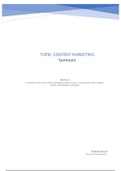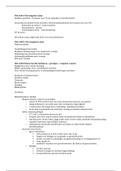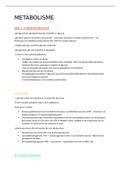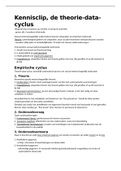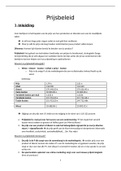ECON 208 Week 16 – Growth in an open economy
1) Introduction
The objective is to explore the effects of financial openness on output per capita.
2) Financial Openness
Financial Openness Indicator =
𝐬𝐮𝐦 𝐨𝐟 𝐟𝐨𝐫𝐞𝐢𝐠𝐧 𝐚𝐬𝐬𝐞𝐭𝐬 (𝐡𝐞𝐥𝐝 𝐛𝐲 𝐭𝐡𝐞 𝐝𝐨𝐦𝐞𝐬𝐭𝐢𝐜 𝐜𝐨𝐮𝐧𝐭𝐫𝐲)+ 𝐝𝐨𝐦𝐞𝐬𝐭𝐢𝐜 𝐥𝐢𝐚𝐛𝐢𝐥𝐢𝐭𝐢𝐞𝐬 (𝐡𝐞𝐥𝐝 𝐛𝐲 𝐭𝐡𝐞 𝐫𝐞𝐬𝐭 𝐨𝐟 𝐭𝐡𝐞 𝐰𝐨𝐫𝐥𝐝)
𝑮𝒓𝒐𝒔𝒔 𝑫𝒐𝒎𝒆𝒔𝒕𝒊𝒄 𝑷𝒓𝒐𝒅𝒖𝒄𝒕 (𝑮𝑫𝑷)
➢ Advanced countries financial openness accelerated at the beginning of the 1990’s.
➢ Financial openness is the result of globalization.
3) Globalization
Globalization refers to increased integration of goods and financial market.
➢ Globalization increased because advanced countries:
- Progressively removed barriers of trade (fall in tariffs)
- Decrease in capital controls
Capital controls are the set of regulations which restrict the capital flows between
countries.
4) Globalization Waves
• First globalization wave (1870-1914)
First globalization wave starts in 1870 during the industrial revolution. This steep increase in
trade and capital openness is the result of:
- dramatic decline in transport and communication costs
(Which fostered international trade by easing the transport of goods)
- To a lesser extent to the fall in tariffs on goods.
The integration of the market of goods and services has been associated with an integration
of the capital market.
• Second globalization wave (1950-)
The second wave starts at the beginning of the 1950’s following the end of WWII. The
second wave is the result of:
- Advanced countries adopt free-trade policies to promote economic growth
- Advanced countries cut tariff rates on manufactured goods
,International Flows of Capital and Goods
5) Introduction to International Flows of Capital and Goods
• Net Exports (NX)
- When a country runs a trade surplus (NX > 0)
- When a country runs a trade deficit (NX < 0)
Note:
When a country runs a trade deficit (NX < 0), it experiences capital inflows which lower the NIIP.
• Capital Flows (CF)
CF = Savings – Investments
- A country experiences capital inflows (S < I or CF < 0)
- A country experiences capital outflows (S > I or CF > 0)
Capital outflows increases the net international investment position (NIIP).
• Net International Investment Position
A net international investment position (NIIP) measures the gap between a nation’s stock of
foreign assets and a foreigner's stock of that nation's assets. Essentially, it can be viewed as
a nation’s balance sheet with the rest of the world at a specific point in time.
NIIP denoted by Bt at time t = difference between the stock of foreign assets owned by the
domestic country, denoted by At, and the stock of domestic assets liabilities held by the rest
of the world (ROW), denoted by Lt:
Bt = Assets (t) – Liabilities (t) = At – Lt
- When B > 0 ⇒ The country is a net creditor.
- When B < 0 (foreign borrowing) ⇒ The country is a net debtor.
- If the country lends more to the ROW, the domestic country accumulates more assets
(i.e., At increases) which increases Bt.
- If the country borrows more from the ROW, Bt declines since liabilities increase (i.e., Lt
rise).
,Moving from the Closed to the Open Economy
6) In an open economy, a fraction of final output can be sold abroad, i.e., exported
Accounting identity in open economy says that final output (or GDP) is equal to its demand
counterparts:
Where:
- Y is output produced by domestic firms,
- CD is domestic consumption of domestic goods and services by CD,
- ID is domestic investment in capital goods,
- GD is government purchases of domestic goods and services,
- EX is exports of domestic goods and services to the rest of the world (ROW).
7) In an open economy, a fraction of expenditures is imported from abroad
• Let us denote imports by households, firms and the government:
• Adding and subtracting imports on the RHS of (1), leads to the usual final goods and services
market equilibrium:
Where:
- where C and G equals final consumption expenditure by households and the government,
respectively.
- I is gross fixed investment.
8) In an open economy, any excess of output over expenditure leads to a surplus in the balance
of trade
• Defining net exports, NX, or trade balance T B, to be exports, EX, less imports, IM, the
accounting identity (2) becomes:
• We can rearrange the above accounting identity in order to determine the cause of a trade
surplus or a trade deficit:
, International Capital Flows and the Trade Balance
9) Capital Flows
- If C + I + G > Y ⇒ NX < 0 ⇒ financed by capital inflows.
- If C + I + G < Y ⇒ NX > 0 ⇒ leads to capital outflows.
10) Private Savings
• We define private savings as:
to be the share of after-tax income which is not consumed.
• We define public savings as:
to be the excess of tax receipts over government purchases.
11) Accounting Identity
Subtracting absorption C + I + G from the LHS of (4) and adding and subtracting taxes, i.e. −T + T,
the accounting identity (4) becomes:
- In a closed economy the country sells its whole production on the domestic market which
implies that Y is equal to domestic absorption and thus S = I:
- In an open economy, a share of absorption is imported and a share of production is
exported. If EX > IM ⇒ means that Y > C + I + G or alternatively that S > I.
This excess of savings over investment can be invested abroad and we say that the
domestic country experiences a capital outflow:
- Conversely, if Y < C + I + G or alternatively that S < I, then the country must borrow abroad
in order to cover the excess of domestic absorption over revenues.
The country is said to experience capital inflows:
when S < I, the excess of expenditures over revenues is covered by capital inflows.
1) Introduction
The objective is to explore the effects of financial openness on output per capita.
2) Financial Openness
Financial Openness Indicator =
𝐬𝐮𝐦 𝐨𝐟 𝐟𝐨𝐫𝐞𝐢𝐠𝐧 𝐚𝐬𝐬𝐞𝐭𝐬 (𝐡𝐞𝐥𝐝 𝐛𝐲 𝐭𝐡𝐞 𝐝𝐨𝐦𝐞𝐬𝐭𝐢𝐜 𝐜𝐨𝐮𝐧𝐭𝐫𝐲)+ 𝐝𝐨𝐦𝐞𝐬𝐭𝐢𝐜 𝐥𝐢𝐚𝐛𝐢𝐥𝐢𝐭𝐢𝐞𝐬 (𝐡𝐞𝐥𝐝 𝐛𝐲 𝐭𝐡𝐞 𝐫𝐞𝐬𝐭 𝐨𝐟 𝐭𝐡𝐞 𝐰𝐨𝐫𝐥𝐝)
𝑮𝒓𝒐𝒔𝒔 𝑫𝒐𝒎𝒆𝒔𝒕𝒊𝒄 𝑷𝒓𝒐𝒅𝒖𝒄𝒕 (𝑮𝑫𝑷)
➢ Advanced countries financial openness accelerated at the beginning of the 1990’s.
➢ Financial openness is the result of globalization.
3) Globalization
Globalization refers to increased integration of goods and financial market.
➢ Globalization increased because advanced countries:
- Progressively removed barriers of trade (fall in tariffs)
- Decrease in capital controls
Capital controls are the set of regulations which restrict the capital flows between
countries.
4) Globalization Waves
• First globalization wave (1870-1914)
First globalization wave starts in 1870 during the industrial revolution. This steep increase in
trade and capital openness is the result of:
- dramatic decline in transport and communication costs
(Which fostered international trade by easing the transport of goods)
- To a lesser extent to the fall in tariffs on goods.
The integration of the market of goods and services has been associated with an integration
of the capital market.
• Second globalization wave (1950-)
The second wave starts at the beginning of the 1950’s following the end of WWII. The
second wave is the result of:
- Advanced countries adopt free-trade policies to promote economic growth
- Advanced countries cut tariff rates on manufactured goods
,International Flows of Capital and Goods
5) Introduction to International Flows of Capital and Goods
• Net Exports (NX)
- When a country runs a trade surplus (NX > 0)
- When a country runs a trade deficit (NX < 0)
Note:
When a country runs a trade deficit (NX < 0), it experiences capital inflows which lower the NIIP.
• Capital Flows (CF)
CF = Savings – Investments
- A country experiences capital inflows (S < I or CF < 0)
- A country experiences capital outflows (S > I or CF > 0)
Capital outflows increases the net international investment position (NIIP).
• Net International Investment Position
A net international investment position (NIIP) measures the gap between a nation’s stock of
foreign assets and a foreigner's stock of that nation's assets. Essentially, it can be viewed as
a nation’s balance sheet with the rest of the world at a specific point in time.
NIIP denoted by Bt at time t = difference between the stock of foreign assets owned by the
domestic country, denoted by At, and the stock of domestic assets liabilities held by the rest
of the world (ROW), denoted by Lt:
Bt = Assets (t) – Liabilities (t) = At – Lt
- When B > 0 ⇒ The country is a net creditor.
- When B < 0 (foreign borrowing) ⇒ The country is a net debtor.
- If the country lends more to the ROW, the domestic country accumulates more assets
(i.e., At increases) which increases Bt.
- If the country borrows more from the ROW, Bt declines since liabilities increase (i.e., Lt
rise).
,Moving from the Closed to the Open Economy
6) In an open economy, a fraction of final output can be sold abroad, i.e., exported
Accounting identity in open economy says that final output (or GDP) is equal to its demand
counterparts:
Where:
- Y is output produced by domestic firms,
- CD is domestic consumption of domestic goods and services by CD,
- ID is domestic investment in capital goods,
- GD is government purchases of domestic goods and services,
- EX is exports of domestic goods and services to the rest of the world (ROW).
7) In an open economy, a fraction of expenditures is imported from abroad
• Let us denote imports by households, firms and the government:
• Adding and subtracting imports on the RHS of (1), leads to the usual final goods and services
market equilibrium:
Where:
- where C and G equals final consumption expenditure by households and the government,
respectively.
- I is gross fixed investment.
8) In an open economy, any excess of output over expenditure leads to a surplus in the balance
of trade
• Defining net exports, NX, or trade balance T B, to be exports, EX, less imports, IM, the
accounting identity (2) becomes:
• We can rearrange the above accounting identity in order to determine the cause of a trade
surplus or a trade deficit:
, International Capital Flows and the Trade Balance
9) Capital Flows
- If C + I + G > Y ⇒ NX < 0 ⇒ financed by capital inflows.
- If C + I + G < Y ⇒ NX > 0 ⇒ leads to capital outflows.
10) Private Savings
• We define private savings as:
to be the share of after-tax income which is not consumed.
• We define public savings as:
to be the excess of tax receipts over government purchases.
11) Accounting Identity
Subtracting absorption C + I + G from the LHS of (4) and adding and subtracting taxes, i.e. −T + T,
the accounting identity (4) becomes:
- In a closed economy the country sells its whole production on the domestic market which
implies that Y is equal to domestic absorption and thus S = I:
- In an open economy, a share of absorption is imported and a share of production is
exported. If EX > IM ⇒ means that Y > C + I + G or alternatively that S > I.
This excess of savings over investment can be invested abroad and we say that the
domestic country experiences a capital outflow:
- Conversely, if Y < C + I + G or alternatively that S < I, then the country must borrow abroad
in order to cover the excess of domestic absorption over revenues.
The country is said to experience capital inflows:
when S < I, the excess of expenditures over revenues is covered by capital inflows.

